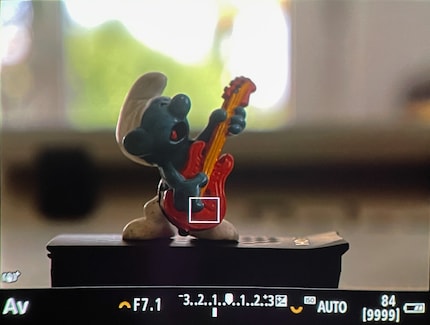
Background information
Hands-on with the Pixel 9a: Google’s mid-range is looking better and better
by Florian Bodoky

The resolution on camera viewfinders or screens isn’t as high as you might expect. This is because the specifications from manufacturers are far from straightforward. Here you can find out what they really mean.
Electronic viewfinders (EVFs) have different resolutions. Manufacturers usually specify these in millions of dots or pixels. These days, an average viewfinder has a resolution of 3.69 million dots. A good one has 5.76 million and a very good one 9.44 million dots.
It definitely sounds like a lot. In fact, like more than it actually is.
This is because dots aren’t pixels, but sub-pixels. In an RGB screen, each pixel consists of three sub-pixels – one each for the colours red, green and blue. To get the number of pixels, you have to divide the subpixels by three. So, 3.69 million dots become 1.23 million pixels – which doesn’t sound particularly great anymore.
The figure reads even more measly if you divide the total number into length and width. With an aspect ratio of 4:3, this results in 1280 × 960 pixels. This is the standard aspect ratio of EVFs. With a 3:2 format sensor, the remaining black strip is used to display shooting information.

There are also screens where each pixel has four sub-pixels. For example, in a WOLED panel, a white subpixel is added for each pixel. If screens like these were then installed in camera viewfinders, the number of subpixels would have to be divided by four. To my knowledge, however, this isn’t being done anywhere yet.
Camera LCD’s are similar. The displays on the back of the cameras also show dots instead of pixels in the data sheets. What’s more, they often have a 4:3 aspect ratio, sometimes even 3:2. This means the resolutions are even lower here. A common value for an LCD is 1.44 million dots. That is 480,000 pixels – i.e. 800 × 600 pixels.
I don’t know why manufacturers specify their screens in dots instead of pixels. I can’t see a technical reason for this. These screens don’t work any differently to computer or TV panels. As is often the case, it’s most likely a marketing ploy.
One thing’s certain: if one manufacturer does it, the others have to follow suit. Otherwise they risk giving the impression that their own resolutions aren’t competitive. Plus, in their eyes, hardly anyone will recognise the difference between dots and pixels when skimming through the specifications.
Perhaps the manufacturers wanted to mirror image sensors. In a sense, the pixels there are also only sub-pixels: they can only display one of the colours red, green or blue.
But there is one important difference: in the end, you get an image that actually has the promised number of pixels. This means that a 24 megapixel sensor actually provides you with 24 million pixels. This is why manufacturers explicitly refer to pixels and not dots.
This is made possible by interpolation: the correct colour can be calculated for each pixel from the surrounding pixels. However, this interpolation leads to a loss of sharpness. A monochrome sensor like the one in the Leica Q2 Monochrom delivers sharper images than a colour sensor with the same resolution.
If EVFs delivered an unacceptably poor image, they’d never have displaced SLR cameras from the market. A viewfinder image with 1280 × 960 pixels isn’t optimal, but good enough for most purposes. However, the difference in a higher resolution is clearly visible.
The quality of the live image also depends on other factors. Important criteria are the refresh rate and the brightness of the viewfinder. They determine whether you see a smooth image and how well you cope in very bright environments.
All these things have an impact on battery life. In particular, a high resolution combined with a high refresh rate requires a lot of computing power and needs corresponding power. Brightness and refresh rate can be reduced in the settings to save battery power. But this doesn’t apply to the resolution. The specifications for viewfinder mode usually state a shorter battery life than for the LCD because the viewfinder has a higher resolution.
A camera that can do all this also needs a powerful battery and an efficient processor. In 2025, the technology’s so advanced that most viewfinders should have a minimum of 3.69 million dots (i.e. 1280 × 960 pixels).
My interest in IT and writing landed me in tech journalism early on (2000). I want to know how we can use technology without being used. Outside of the office, I’m a keen musician who makes up for lacking talent with excessive enthusiasm.
Interesting facts about products, behind-the-scenes looks at manufacturers and deep-dives on interesting people.
Show all
Background information
by Florian Bodoky

Background information
by Jan Johannsen

Background information
by Michelle Brändle